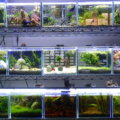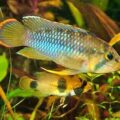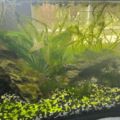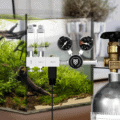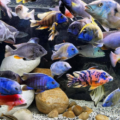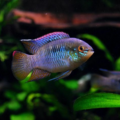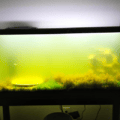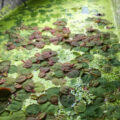The territorial shell dwellers, Similis Cichlid, are a fun, small cichlid species to keep in your aquarium. Come find out about how to keep these unique fish from identification and habitat setup to breeding and healthcare needs.
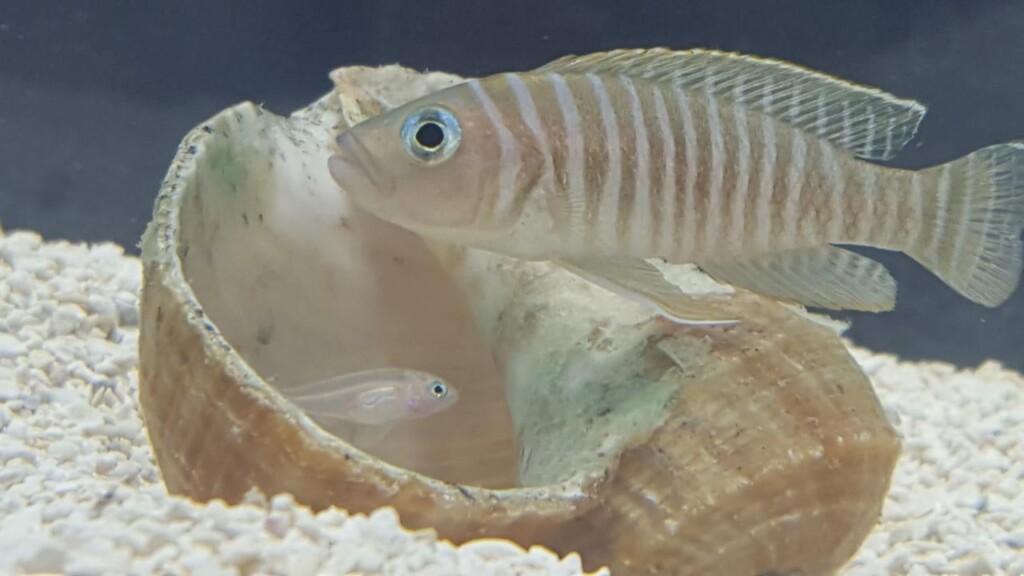
Introduction
The Similis Shell-Dweller is a small, striped shell-dwelling species from Lake Tanganyika that rarely gets the recognition it deserves as an aquarium pet. So, this Neolamprologus similis overview fixes that and highlights all the ways this striped cichlid can elevate your tank.
This comprehensive Tanganyikan shell-dweller profile includes basic identification tips, info on its natural habitat, behavioral patterns, food preferences, breeding, and health tips.
With its peaceful behavior within colonies, compact size, and popularity in nano aquariums, beginners can easily handle Similis Cichlid care.
Author’s Note: Check out our post on the 15 Dwarf Cichlids for a Peaceful Community Aquarium for more dwarf cichlid varieties!
Natural Habitat and Behavioral Characteristics
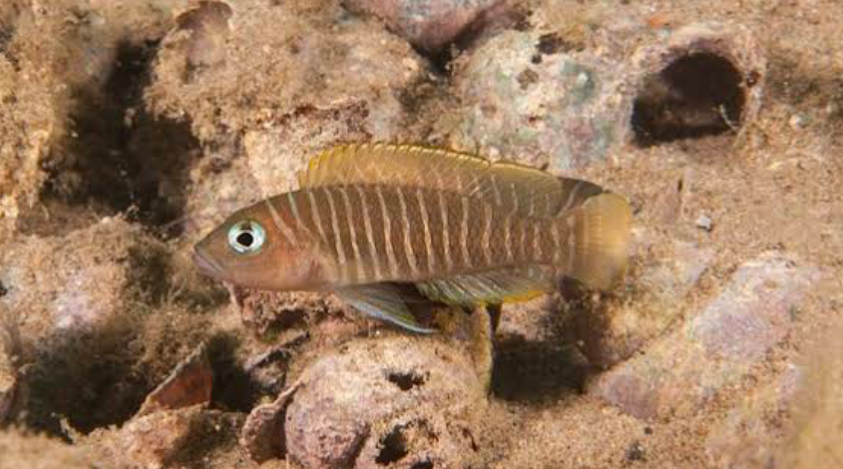
Similis Cichlids create caves for hiding in their natural habitat
The Similis Shell-Dweller is a territorial freshwater fish born in the Tanganyikan region of Africa. So, it shows typical Tanganyikan shell-dwelling cichlid behavior like living in rocks, being a territorial loner, and preferring shallow waters.
Unlike N. multifasciatus, who also come from the Neolamprologus similis’ natural habitat, this species doesn’t do well in communal spaces. So, you must provide an aquarium that complements its personality.
Designing the Ideal Aquarium Setup for Similis
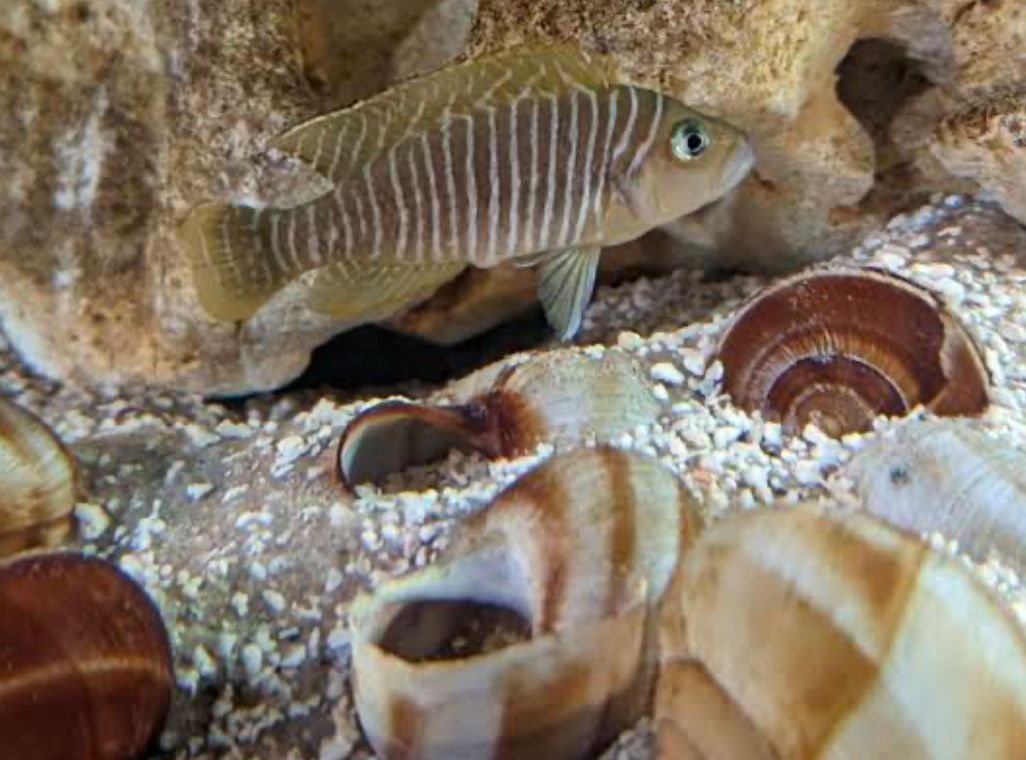
This is an appropriate Neolamprologus similis tank setup, including the tank size, layout, and water parameters.
Tank Size
A tank of 20–30 gallons of water will comfortably hold a small group of Similis Cichlids since they’re an average size of 2–3 inches (5–7.6 cm). Four to five fish make up a small school so you’ll need a medium to large-sized tank for more fish with a community of other fish.
Layout Tip
You need plenty of empty shells, open sand substrate, and stable rockwork when designing a shell cichlid aquarium layout.
Space out each decorative piece, but ensure they’re cohesive. Avoid overcrowding the space without clear boundaries for each species. You can use physical dividers to mark out territories for your pets.
Water Parameters
This Similis Cichlid tank guide is incomplete without specific water parameters for housing this species. Stabilize the water conditions using these ranges.
| pH | 7.8 – 9.0 |
| temperatures | 75–80°F |
| hardness | 15-25 dH |
Ensure you use a strong filtration system, with moderate water flow. It’ll ensure the water stays breathable and clean for your Cichlids.
Appearance and Physical Traits to Look For
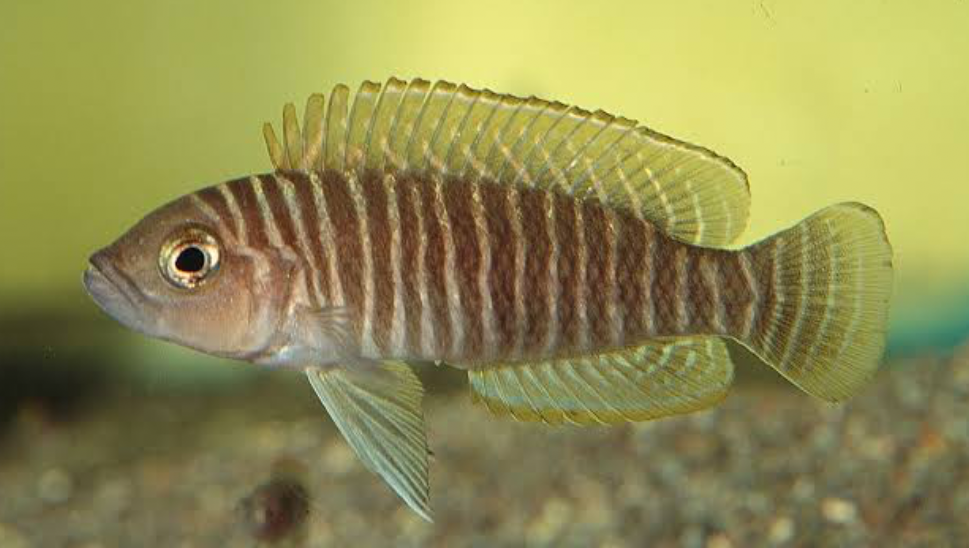
This species has large round eyes and horizontal stripes
Let’s highlight some distinct Tanganyikan cichlid identification traits to help you distinguish them from other fish living in the same habitat. You can use their physical coloration and personality traits for this part.
Distinctive horizontal brown and white zebra-like striping, body shape, fin structure, and maximum size (~2 inches). Contrast subtly with multifasciatus, which has shorter stripes and different eye-to-body proportions.
Color Pattern
Similis Cichlid markings are their most significant feature. They’re iridescent horizontal stripes like zebra patterns but in the colors brown and white.
Unique Traits
Other physical characteristics distinguishing this species include its high stripe count and rounder eye structure. But beyond the Neolamprologus similis’ appearance, you can also identify them by their solitary behavior. They don’t school or hang out in groups.
Diet and Feeding Routine for Vibrancy and Growth
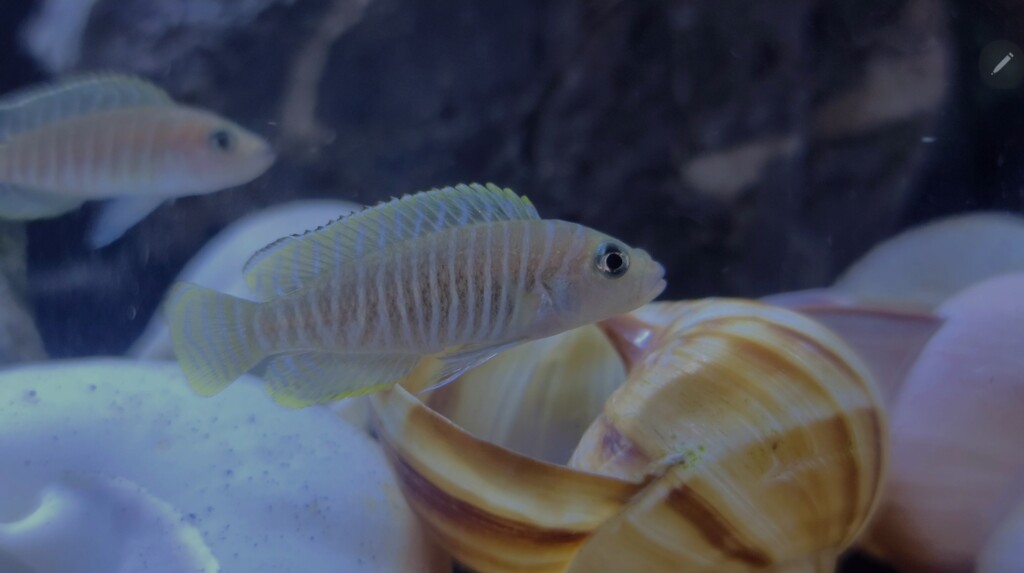
This species survives in protein-rich omnivorous nutrition supplemented with veggies, fruits, and vitamins. An African cichlid micro diet suitable for your Similis Cichlid must be balanced including both plant-based and animal-based foods. Examples:
- Micro pellets
- Crushed flakes
- Frozen foods
- Live foods, like brime shrimp and blood worms
Author’s Note: Check out our post on the 15 Best foods for Cichlids for a more comprehensive list of foods that support growth and boosts color!
Feeding Frequency
Have a routine for feeding Neolamprologus similis to reduce the dietary complications like overfeeding and malnutrition.
Feed them small amounts of balanced diets once or twice daily depending on their health condition and age. Juveniles eat more but have small stomachs, so serve them controlled portions that they can consume in less than 3 minutes.
Supplement Tip
Include Spirulina-based foods for color and digestion to supplement your shell-dweller’s nutrition.
Compatible Tank Mates and Territorial Concerns
Test your Tanganyikan cichlid compatibility with other species by comparing their sizes, needs, personalities, and diet.
List species that can be housed with Similis in divided or large aquariums, like peaceful rock dwellers or upper-level swimmers. Avoid mixing with other shell dwellers or similar-looking cichlids.
Compatible Species
Because they’re solo pets, it’s better to keep the Similis Cichlid alone, but if you must add it to a community, choose peaceful rock dwellers and upper-level swimmers. They don’t compete for resources.
Some examples are:
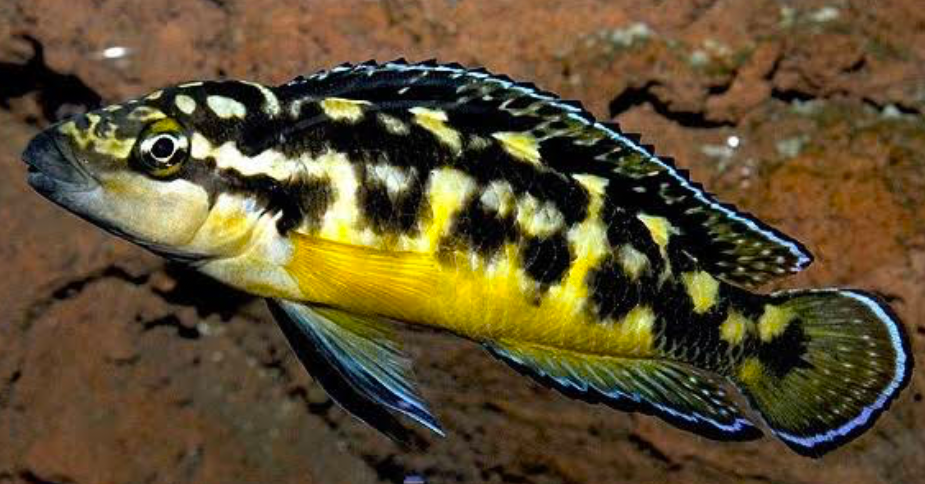

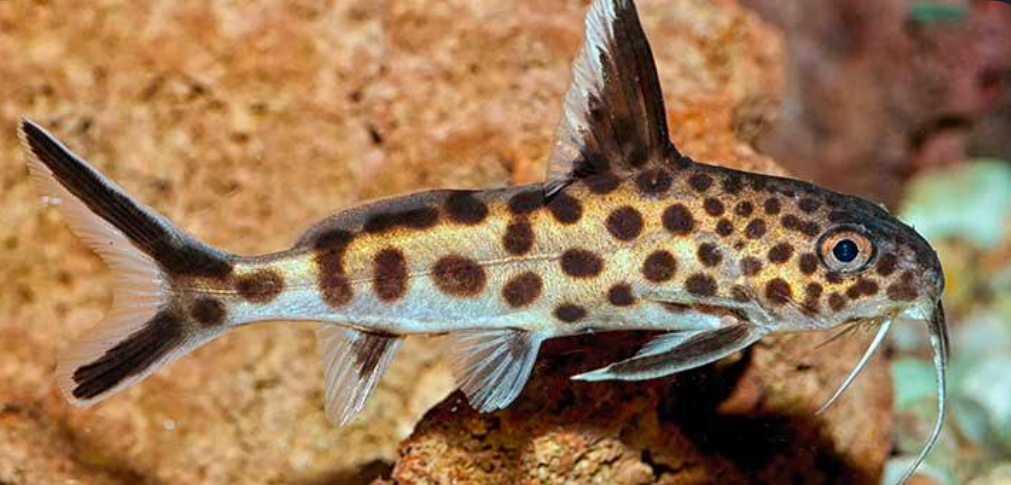
Avoid
For cichlid aggression management, it’s best to avoid overcrowding. Provide enough separate spaces with dividers in medium tanks or open swimming areas in larger tanks.
Also carefully select your Neolamprologus similis tank mates by avoiding other shell-dwellers in the Neolamprologus family and larger aggressive cichlids..
Breeding Behavior and Reproductive Notes
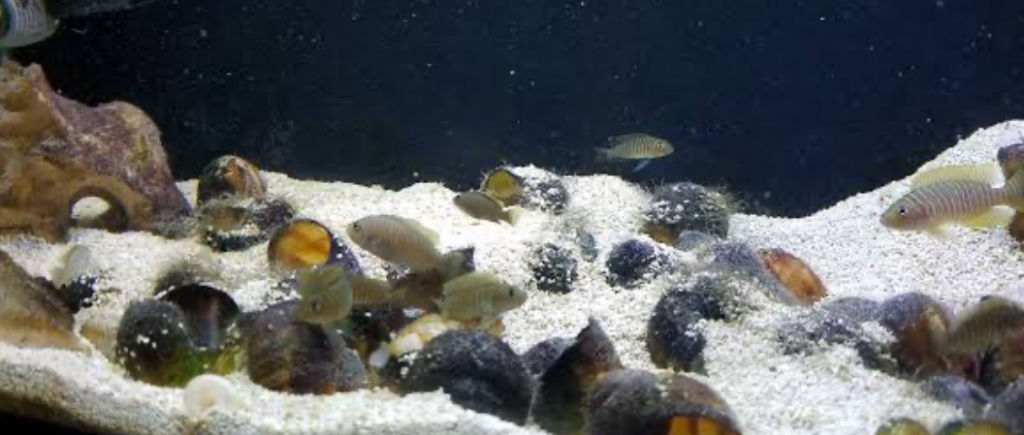
Shell-dwelling cichlid reproduction includes some unique habits like laying eggs inside shells, parents caring for the eggs before hatching and independent breeding unlike N.multifasciatus.
Read the following steps carefully for instructions on breeding Neolamprologus similis.
Spawning Setup
Neolamprologus similis are harem breeders meaning that a single male mates with three to five females at once.
Add a minimum of 2–3 shells per female breeder to your Tanganyikan cichlid spawning setup. It’ll give them enough space to lay their clutches of eggs without fighting over territories.
Set the water parameters according to the ranges provided above, then wait for your pets to act naturally. After laying their eggs, the females tend their broods inside the shells while the males guard all the shells until the eggs hatch
Fry Development
Throughout their childhood juveniles remain near shells for protection from harsh environmental conditions and so that their parents can protect them.
Growth Note
Unlike other fish species, you can raise your Similis Cichlid fry with their parents in stable colonies. Stabilize the aquarium colony with pristine water quality and adequate tank essentials for healthy growth.
Monitoring Health and Preventing Disease
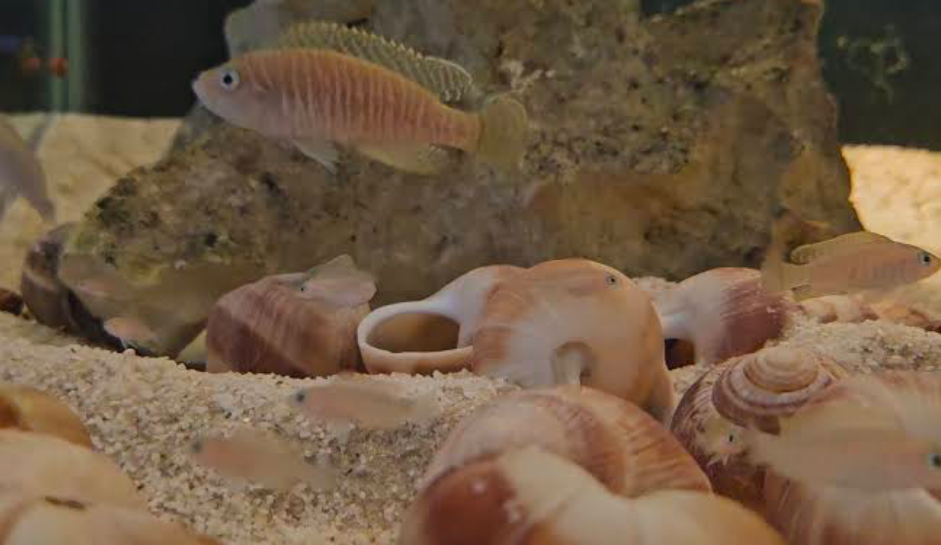
Instruct to mention signs of stress, aggression injuries, parasitic infections, and issues caused by unstable water conditions. Offer tips for keeping water pristine in small tanks.
Preventative Practices
Use these tips to ensure African cichlid disease prevention:
- Weekly water changes reduce buildups and the possibility of bacterial or fungus infections.
- Avoid tank rearrangement because change and unfamiliarity stress Similis Cichlid fish.
Common Issue
You may experience shell-dweller care problems if you fail to follow the tips in this guide, from the ideal tank design to appropriate feeding and companion selection.
Some common Neolamprologus similis health issues include fin-nipping from aggressive tank mates, cloudy eyes from contaminated water, and digestive problems causing a refusal to eat.
How Long Do Similis Live and What Do They Need Long-Term?
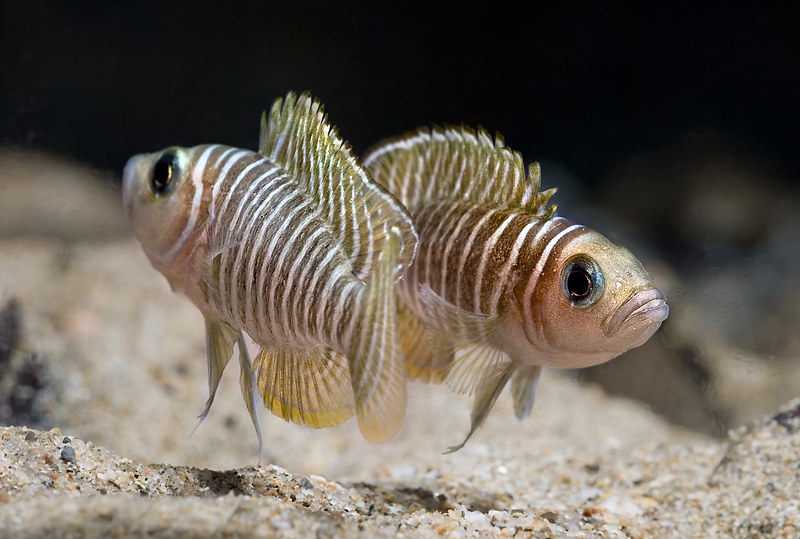
You’re almost at the finish line. The last hurdle is preparing for Tanganyikan dwarf cichlid aging by incorporating long-term care into your maintenance routine.
Firstly, let’s talk about the Neolamprologus similis lifespan and how long it can last in stable conditions. Then, we’ll plan ways to accommodate its evolving features and needs
Include recommendations for long-term success, such as colony spacing, routine feeding, and low-stress housing.
Growth Facts
Neolamprologus similis mature slowly and can live up to 8–10 years in a stable environment. They get territorial as they age, so they need low-stress environments with adequate spacing for every inhabitant to avoid aggression.
Tank Evolution
Shell count increase for colony growths, colony spacing, routine feeding, and tank size increase are some ways of ensuring Similis Cichlid long-term care throughout their 8 – 10 years lifespan.
Conclusion: A Striped Beauty for Dedicated Hobbyists
You’re at the finish line of this rich Tanganyikan shell-dweller profile! Let’s wrap it up with a nice bow in the form of a Similis Cichlid care summary.
This beautiful species has a vivid pattern, interactive behavior despite being a loner, and a small size perfect for aquarists with smaller space requirements. Whether you’re seeking a species-specific setup with a rich personality or focus on visual interest, this African cichlid is for you.
Let’s hear what you think in the comment box below

